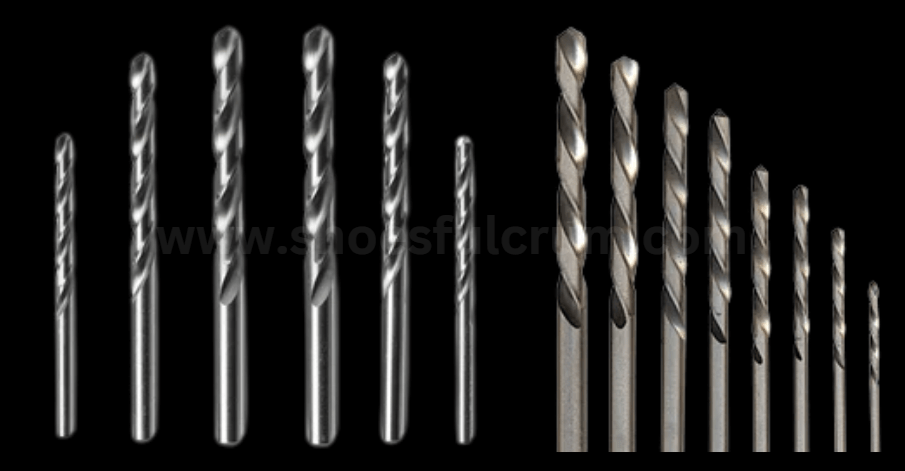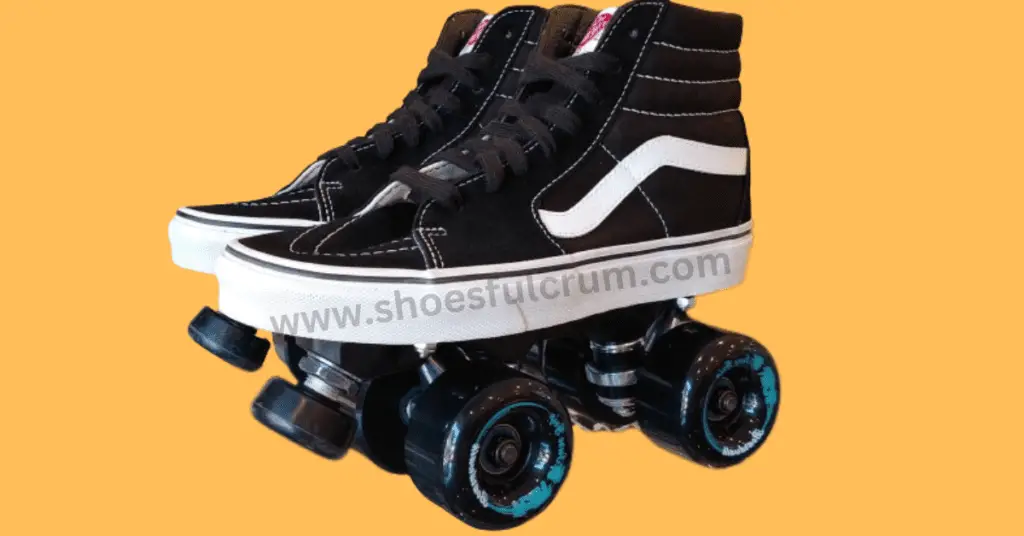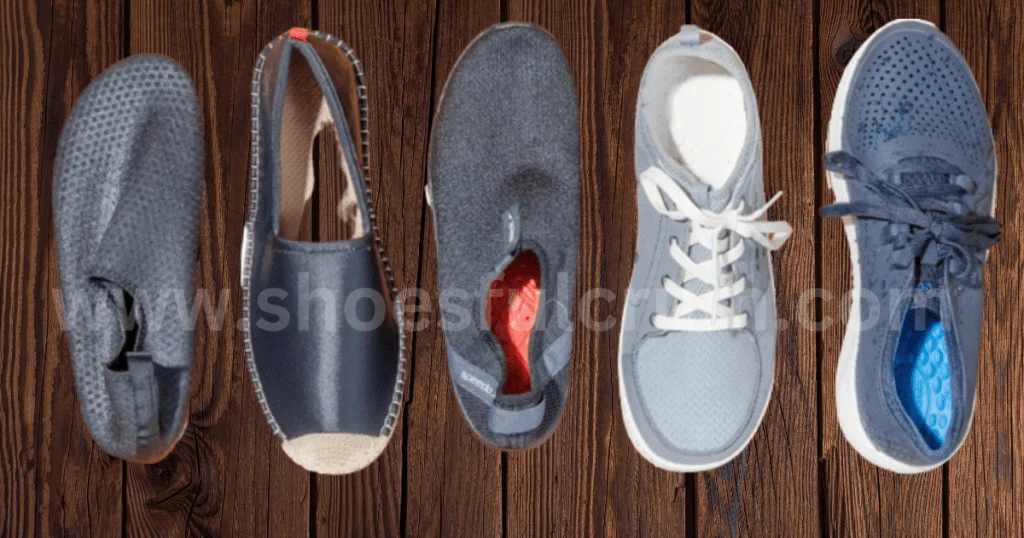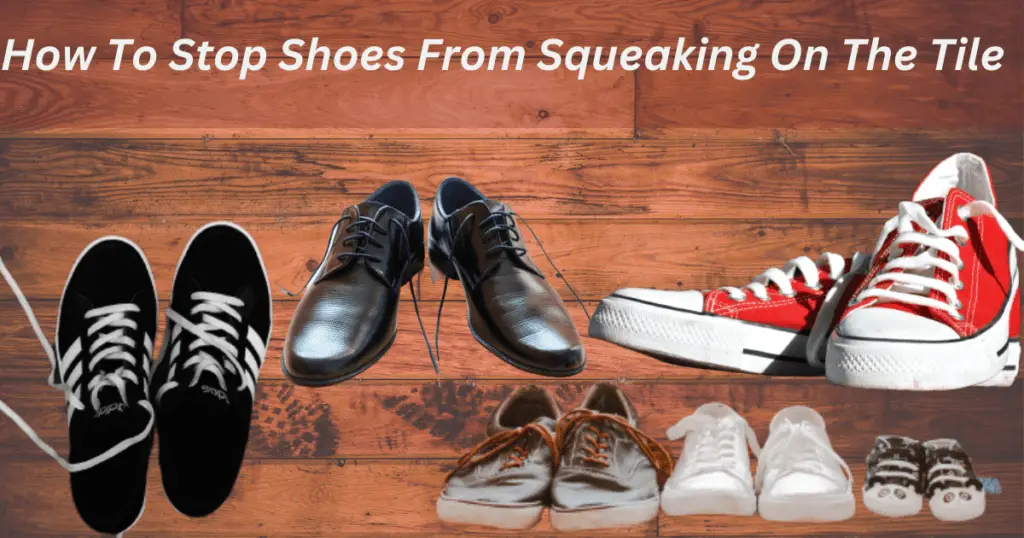For many people, roller skating has been a favorite activity for decades. It’s a wonderful way of staying active, improving your balance and coordination, and enjoying the outdoors. While there are numerous roller skates on the market, they are frequently pricey and lack personalization choices.
If you like Vans shoes, you may wonder how to make vans roller skates and take your roller skating to the next level. By doing so, you can design a pair of roller skates that are both fashionable and inexpensive.
We’ll show you how to create your own Vans roller skates with simple materials and techniques in this article. We will guide you through the process of selecting the correct Vans shoes, removing the soles, preparing the shoes for mounting, mounting the skates, installing the wheels and bearings, and testing the skates. In addition, we’ll provide you with some tips and considerations for keeping your Vans roller skates safe and functional.
Whether you’re a beginner or an experienced skater, this guide will help you design a unique pair of Vans roller skates that will set you apart from the crowd.
Why Should We Prefer Vans Shoes Over Other Shoes
Before getting started we should know why we prefer Vans shoes over other shoes. Actually, Vans roller skates have gained popularity over the past years, particularly among those who enjoy skating and want a personalized touch to their equipment.
The durability and comfort of Vans shoes as a base for your roller skates are one of their benefits. Vans shoes are made to withstand the wear and tear of daily use, making them an excellent choice for skating. With the correct materials and tools, you can make a pair of roller skates that are both fashionable and functional.
Furthermore, their large range of styles and colors allows you to create a unique look that complements your style.
Materials You Need To Make Your Own Vans Roller Skates:
You need the following materials for making your own vans roller skates.
Aluminium Insole:

An aluminium insole is a custom-made insole that adds additional support and stability to your Vans sneakers. It is made by cutting an aluminium sheet to fit the bottom of your shoes and drilling holes for mounting hardware.
Aluminium Sheet:
This is an optional material, it will use only if you are making the insole yourself. However, it can significantly increase your roller skate’s performance and comfort. You’ll need an aluminium sheet at least 1.5mm thick, preferably 2mm if you can find it.
Sharpie or Paint Pen:
When manufacturing your aluminium insole, use a sharpie or paint pen to trace the outline of your Vans shoes onto the aluminium sheet. This ensures that the insole fits exactly within your shoes and provides the support and stability that your roller skates require.
A Pair Of Vans Shoes:

A pair of Vans shoes will serve as the foundation for your roller skates. Because you’ll be skating in them, they must fit properly and be comfortable. You can wear any style of Vans shoes you choose, but shoes with thick soles should be avoided because they make mounting the roller skate plates more difficult.
If you want to remove creases from your vans shoes read this article “How To Remove Creases From Shoes Without Iron(10 Methods)-2023“
Roller Skate Plates:

The metal frame that holds the wheels and attaches to your Vans shoes is known as a roller skate plate. Multiple kinds and brands (Sure-Grip, Riedell, and PowerDyne) of roller skate plates are available, so it is important to choose one that meets your requirements and budget. Be sure the plates you choose are appropriate for the size of your wheels and bearings. Plates are chosen based on personal liking, skating style, and affordability. Certain plates, for example, are designed for speed skating, while others are designed for artistic skating.
Mounting Hardware:

It is used to secure the roller skate plates to your Vans shoes. Bolts, nuts, and washers are commonly used. It’s important to purchase hardware that fits your plates and shoes appropriately to ensure a solid and safe attachment.
Roller Skate Wheels:

Roller skate wheels come in a variety of sizes, shapes, and durometers (hardness levels). They can be made of a variety of materials, including plastic, rubber, and urethane. It is important to choose wheels that are appropriate for the type of skating you intend to undertake and that match the size of your plates and bearings.
The skate’s performance is affected by the size, shape, and durometer (hardness level) of the wheels. Larger wheels, for example, are often used for outdoor skating, whilst smaller wheels are better suited for indoor skating. Harder wheels are faster but have less grip, while softer wheels have more grip but are slower.
Bearings

These are little metal balls that enable wheels to spin smoothly. They are available in a variety of grades and ABEC ratings, with higher values suggesting greater precision and smoother spinning. It should be noted, however, that the ABEC grading system is not standardized, and different manufacturers may use different standards. It’s important to choose bearings that work with your wheels and plates.
Toe Stops (Optional):

Toe stops are rubber pieces that attach to the front of your skates and are used to slow down or stop. They are optional, but for beginners or people who desire more control when skating, they can be useful. Toe stops come in a variety of styles, including adjustable and non-adjustable variants.
Tools You Need To Make Your Own Vans Roller Skates:
You need the following tools for making your own vans roller skates.
Drill Bits:

To make holes in your Vans shoes and the aluminium insole, you’ll need a drill. Normal drill bits are generally adequate for this purpose.
Jigsaw, Gloves, Mask:
Jigsaw, gloves, mask, tool lube, sanding block, or sponge is only required if you are making aluminium insoles and not required if purchasing insoles from a store.
To cut out the insole shape from the aluminium sheet if you’re making an aluminium insole from scratch, you’ll need a jigsaw. To protect your hands and lungs from metal shavings, wear gloves, and a mask. Tool lubricant reduces friction and extends the life of your jigsaw blade. Smooth any rough edges on the aluminium insole with a sanding block or sponge.
Screwdriver:
A screwdriver is required to secure the mounting hardware to the Vans shoes. To avoid damage, use a screwdriver with the same head as the mounting hardware.
Wrench:
A wrench is used to securely tighten the mounting nuts onto the roller skate plates. To avoid stripping or damage, use a wrench that is the same size as the mounting nuts.
1 nail:
Before drilling the final hole in the Vans shoes, a nail can be used to create a pilot hole. This can help prevent the tearing or cracking of the shoe material during drilling.
Hammer or another strong-hitting object:
To lightly tap the mounting hardware into place on the Vans shoes, use a hammer or similar heavy-hitting object.
By collecting all of these materials, you will be able to design a customized and unique pair of Vans roller skates that meet your style and demands.
Step-By-Step Instructions For Making Your Own Vans Roller Skates:
Here are the steps for making your own Vans roller skates with the materials and tools listed:
Prepare your Vans shoes:
Remove your Vans shoes’ laces and any insoles. Let them dry after carefully cleaning them.
Make the aluminium insole (optional):
Trace the outline of your Vans shoes onto the aluminium sheet with a sharpie or paint pen if you’re building your aluminium insole. Carefully cut out the insole shape using a jigsaw. With a sanding block or sponge, smooth away any rough edges.
Mark the placement of the plates:
Mark the positioning of the roller skate plates on the bottom of your Vans shoes using masking tape. This will ensure that the plates are properly aligned when you attach them.
Create pilot holes:
With a nail and hammer, make small pilot holes in the Vans shoes where you marked the plate placement. This will help in the direction of the drill bit and prevent the shoe material from tearing or splitting.
Drill holes in the shoes:
Using a drill with a 1/8 inch drill bit, drill holes in the Vans shoes where the pilot holes were made. Make sure you drill through the shoe’s sole.
Attach the mounting hardware:
Insert the mounting bolts through the holes in the plates and shoes, then place the roller skate plates on the bottom of the Vans shoes. Use a wrench to tighten the nuts onto the bolts.
Insert the aluminium insole:
If you made an aluminium insole, slide it inside the Vans shoes and place it on top of the sole. Align the mounting holes in the insole with the holes in the Vans shoes and attach the mounting hardware.
Add the wheels and bearings:
Place the bearings inside the wheels and insert the wheels onto the axles of the roller skate plates. Make sure that the wheels spin freely and smoothly.
Toe Stops:
If you’re using toe stops, place them into the front of the roller skate plates and secure them using the mounting hardware.
Test the skates:
Put on your new Vans roller skates and practice on a smooth surface. Adjust the mounting hardware and toe stops as needed for your comfort and performance.
Congratulations, you’ve successfully made your own Vans roller skates! Skate safely and have fun.
Further Tips and Suggestions
- To begin, it is important to select the proper size and style of Vans shoes. Roller skating may put a lot of strain on your feet, so it’s important to wear shoes that fit properly and are comfortable. To discover the ideal fit for your feet, try on several sizes and styles. Breaking in your shoes before skating is also a good practice to provide optimal comfort and flexibility.
- It’s important to purchase roller skate plates that are compatible with your Vans shoes and the style of skating you’ll be doing. Some plates are intended for specific types of skating, such as roller derby or jam skating, while others are more general. Make sure to research different brands and models to find the best fit for your needs.
- Mounting in the roller skate plates on your Vans shoes can be difficult, especially if you’re new to roller skating. Make sure to carefully follow the manufacturer’s instructions and use the proper tools for the job. If you’re unsure how to mount the plates, seek guidance from a professional or experienced roller skater.
- It’s important to buy roller skate wheels that are suited for the style of skating you’ll be doing. Outside skating requires harder wheels, whereas indoor skating requires softer wheels. Choose wheels that are compatible with your plates and bearings, and think about investing in higher-quality wheels for improved performance and durability.
- Bearings are another crucial factor to consider while designing Vans roller skates. Choose bearings that are compatible with your wheels and plates, and think about investing in higher-quality bearings for smoother, more precise spinning.
- It’s important to take time and use the proper tools while drilling holes in your Vans shoes and aluminium insole. Before drilling the final hole, make a pilot hole in the shoes with a 1/8-inch drill bit and a nail. This can assist minimize the tearing or cracking of the shoe material during drilling. To avoid stripping or damage, use a screwdriver with the same head as the mounting hardware, as well as a wrench with the same size as the mounting nuts.
- Ultimately, manufacturing Vans roller skates may be a fun and satisfying effort that results in a high-quality and comfortable set of skates. You may make a pair of roller skates that are appropriate for your skating style and demands by following these tips and considerations.
If you want to shine your vans shoes without polish read this article “How To Shine Shoes Without Polish (20 Methods)-2023“
Some Precautions You May Take To Ensure That Your Skates Are Safe And Ready For Use
Put on your safety equipment:
Before testing your skates, make sure you have everything you need, including a helmet, knee pads, elbow pads, and wrist guards. This will help protect you from injury when testing your skates.
Check the mounting hardware:
Before you put your skates on, make sure that all of the mounting gear is properly tightened. Tighten the nuts as much as possible without stripping them with your tool.
Test the wheels:
Stand on your skates and roll back and forth to make sure the wheels are spinning smoothly and there are no wobbles or wiggles. If you notice any issues, check to make sure the bearings are seated correctly and tighten them if necessary.
Test the toe stops (if applicable):
If you have toe stops installed on your skates, test them out by rolling forward and pressing down on the toe stops. Check that they stop your skates smoothly and are not loose or wobbly.
Test the stability and balance:
Once you feel comfortable rolling back and forth, try standing still on your skates and shifting your weight from side to side. This will help you get a feel for the stability and balance of your skates.
Practice skating:
Practice skating: Slow down and concentrate on becoming familiar with the movement and balance of your skates.
Test your stopping ability:
While you practice skating, make sure to test your stopping abilities by using the toe stops (if applicable) or performing a T-stop. This will help you become used to stopping swiftly and safely.
Test your turning ability:
If you feel comfortable skating in a straight line, start practicing turning by leaning into your turns and moving your weight from side to side. This will help you become used to turning swiftly and safely.
Adjust as needed:
If you detect any problems or pain when trying your skates, make the necessary modifications. Tightening the mounting hardware, changing the toe stops, or experimenting with new wheels or bearings are all possibilities.
Repeat the test:
Repeat the testing process once you’ve made any required adjustments to ensure your skates are safe and ready to use. It is essential to test your skates regularly to ensure they are in good condition and safe to use.
By following these steps and thoroughly testing your skates, you can ensure that your Vans roller skates are safe, comfortable, and ready for hours of fun on the rink or the streets.
Conclusion:
You will be now much more familiar with how to make vans roller skates and moreover, making your own Vans roller skates may be successful and enjoyable. You may make a pair of skates that are customized to your preferences and skating style with the correct materials, tools, and instructions. To guarantee a secure and safe attachment, take the time to thoroughly measure and plan out the positioning of the roller skate plates. Moreover, testing and adjusting the skates before usage is essential for guaranteeing that they are comfortable and functional. When working with tools and equipment, always wear the correct safety equipment and check with a professional if you have any concerns or questions. Have fun and enjoy your skating!
FAQs
1. Can I make roller skates out of any style of shoe?
No, not all sorts of shoes may be used to make roller skates. It’s important to choose shoes that fit well and are comfortable but also have a sturdy and flat soles. Vans shoes are a popular choice for making roller skates, but other brands may also work as long as they meet these criteria.
2. Do I need to make an aluminium insole for my roller skates?
No, an aluminium insole is optional but can greatly improve the performance and comfort of your roller skates. If you choose not to make an aluminium insole, you can use the standard insole that comes with your shoes or purchase an aftermarket insole.
3. What size wheels should I use for my roller skates?
The size of your skate wheels will be determined by the type of skating you intend to undertake. Smaller wheels (58-62mm) are often utilized for indoor skating or dancing, but larger wheels (62-70mm) are preferable for outdoor skating or cruising.
4. How do I select the best roller skate plates?
When selecting roller skate plates, keep your skating style and ability level in mind. There are various levels of plates available, including beginner, intermediate, and advanced. Choose plates that are compatible with the size of your wheels and bearings.
5. Can I use regular roller skate bearings?
Yes, normal bearings can be used for roller skates, but make sure they are compatible with your wheels and plates. Higher-quality bearings provide a smoother ride, but they are also more expensive.
6. Can I secure the mounting hardware using duct tape or superglue?
Duct tape or superglue can be used as a temporary solution for securing the mounting gear, but it’s not suggested for long-term use. For a secure and safe attachment, it is best to utilize the necessary hardware and tools.
7. Is it possible to remove the roller skate plates from my shoes?
Roller skate plates can be removed from your shoes, but you must do so carefully to avoid hurting the shoes. Remove the mounting hardware and plate with a screwdriver and wrench, and fix any holes with shoe repair glue or epoxy.

About Author:
Hammad Qadir is a passionate fashion blogger with a passion for shoes, spanning over seven years. As the driving force behind “ShoesFulcrum.com” he offers unparalleled insights into iconic brands like Crocs, Hey Dude, and Birkenstock. With a collection of a hundred pairs, his expertise extends to industry giants like Nike and Adidas. Through insightful reviews and recommendations, Hammad guides readers to their perfect pair. Hammad’s knack for differentiating between brands and guiding readers makes him a trusted authority. Active on Quora, Reddit, Medium, LinkedIn, and Pinterest, he fosters engagement and shares exclusive content. Read more...




